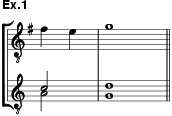
(Ger. Landinoklausel, Landinosext).
A name often used for a cadential formula in which the sixth degree of the scale is interposed between the leading note and its resolution on the tonic or final degree (ex.1..\Frames/F003444.html). Many examples appear in the ballate of Francesco Landini (exx.2 and 3), but it is particularly common in polyphony of the 15th and early 16th centuries.


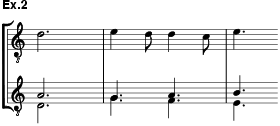
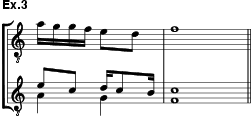
The pattern is perhaps inevitable because contrapuntal theory of the Middle Ages required that a cadence should include two voices moving outwards to an octave (or perhaps a 5th), and composers were driven to add variety by embellishing the progression: several different kinds of embellishment pattern can be found in the music of that time, most of them giving prominence to the sixth degree which had the advantage of giving a perfect 5th with the lower voice in all such cadences. Exx.4, 5 and 6 show the three most common types of the cadence, all taken from the songs of Binchois.
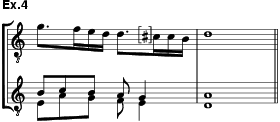
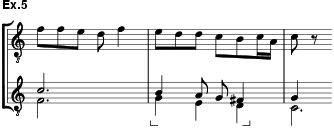
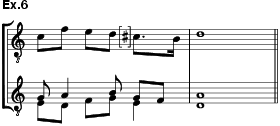
In general the term has been used with extreme caution in scholarly writing: it is normal to put it in quotes, to qualify it as ‘the so-called Landini cadence’, or to find a synonym such as ‘under-third cadence’. But the name, though it has no medieval authority, may not be entirely inappropriate: certainly the figure appears earlier in the monophonic ballate of Gherardello da Firenze, for example; but Landini seems to have been the first composer to use the pattern at all systematically in the manner described above (see M. Long: ‘Landini's Musical Patrimony: a Reassessment of some Compositional Conventions in Trecento Polyphony’, JAMS, xl (1987), 31–52).
A.G. Ritter (Zur Geschichte des Orgelspiels, Leipzig, 1884, p.5) gave what seems to be the earliest description of such a cadence as being characteristic of Landini: he felt that Landini’s reputation as an organist merited a place in the history of organ music but he had access to only one work by the composer, the ballata Non avrà mai pietà, printed in Kiesewetter’s influential and pioneering Schicksale und Beschaffenheit (1841). On the basis of that piece alone Ritter attempted to describe Landini’s musical style and drew attention to the cadence in ex.1. His book had such success, in terms of both subsequent editions and its influence on other handbooks, that the label has remained current, though evidence of that currency must be sought in the more transitory literature rather than in the standard scholarly works.
DAVID FALLOWS